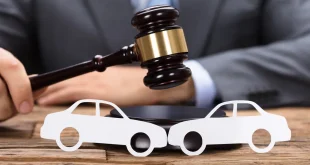Michigan is a beautiful state with lots of great places to visit and access to four of the five Great Lakes as well as more than 11,000 inland lakes. Unfortunately, the state also is prone to bad weather and severe winter storms that can make driving very hazardous. The state averages more than 42 inches of snowfall every year, but those totals go up significantly in the Upper Peninsula and areas that are prone to lake-effect snow.
Rain, Snow, and Ice Affect Driving
Even when it isn’t snowing, Michigan averages 34 inches of rainfall, which sometimes turns into dangerous freezing rain, which usually happens when the air temperature is in the low to mid-30s during the day and drops at night. The precipitation freezes upon landing and coats roads, trees, and power lines in heavy ice. The resulting dangerous ice storms make it very hazardous to drive. When driving conditions are unsafe, here are some tips on how to drive safely in bad weather.
Increase Following Distances
If you have to drive to work, an important medical appointment, or for any other reason, you should increase your following distance. A general rule of thumb in good weather is to maintain at least two car lengths between you and any vehicles you are following while driving. When the road conditions are bad, you should at least double that distance to ensure you can stop safely or react to avoid a collision that might require the help of an experienced car accident attorney in Michigan.
Adjust Your Speed for Road Conditions
Even if you are alone on the roads in bad weather, you need to adjust your speed to drive safely. The worse the road conditions, the slower you should go until you reach your destination. Anyone who does not adjust their speed for road conditions runs the risk of causing an accident.
The accident might mean you go off the road and get stuck or, worse, maybe roll your vehicle. You also run the risk of getting a traffic ticket or being liable for causing an accident – even if you were doing the speed limit. State law requires you to adjust your speed to match road conditions, which means slowing down in bad weather when the roads are in poor condition.
Beware of Ice on Bridges and Overpasses
The best way to handle bad weather is to stay home if you can. Otherwise, when it is raining or snowing outside and the air temperature is near freezing or below it, you need to be especially wary of overpasses and bridges. The elevated sections don’t have the insulating warmth of earth beneath them and allow the cold wind and air to pass underneath, which causes bridges and overpasses to freeze over before other sections of the roads. While some basic precautions could negate the need for a car accident attorney, accident survivors need to hold bad drivers accountable for causing accidents in bad weather.
 HammBurg Be informed with latest news, reviews, entertainment, lifestyle tips, and much more.
HammBurg Be informed with latest news, reviews, entertainment, lifestyle tips, and much more.




